Search Results
Fine Jewelry University Articles matching: “lab grown diamonds”
Showing only FJU Article results. Click here to show all results.
Fine Jewelry University (Show All FJU Articles)
-
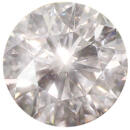
Diamond Buying Guide: The 4 C’s
If you understand how diamonds are graded, you have a better chance of finding the right one for you. At Arden Jewelers, our gemologists are more …the colorless range (D-F), and it’s set in yellow gold, it may appear to be much more yellow than it is. Fancy color diamonds are a fun, non-traditional option. While natural fancies can be very rare and extremely expensive, we now have the …a white diamond to almost any color you can imagine. You can read more about fancy diamond colors here. Clarity Most diamonds contain inclusions. Inclusions are natural birthmarks and useful as identifying characteristics. Clarity grading is …
-
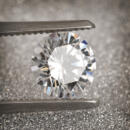
Diamond Brokering
… you through your diamond purchase insures the mastery of the minute details in diamond evaluations. Did you know diamonds of the same grade could be thousands of dollars different in price? A subtle difference in a diamond impacts the price …value hunting system helps with: Locating the most reliable source with the best price Finding independent certified diamonds Locating correctly graded non-cert diamonds Finding the most beautiful diamond possible Arden Jewelers has over 20 …
-
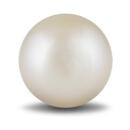
Gem in the Spotlight: Pearl
… Taylor. During Taylor’s ownership, the pearl was set into a necklace designed by Cartier, which also included diamonds and rubies. The La Peregrina pearl is one of the largest and most perfectly symmetrical natural pearls in existence. It … of the different kinds of pearls that you may run into. Saltwater and Japanese Akoya Pearls: These pearls are grown in oysters or mollusks that live in saltwater environments. They come in a wide range of colors, shapes, and sizes, and …
-
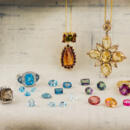
Gem in the Spotlight: Topaz
… Vapor Deposition (CVD) has been developed to create this additional color of topaz. This is the same treatment process used to put coatings on lenses for glasses and cameras. It is also one of the processes that is used to create lab grown diamonds . A thin, multi-colored film is bonded on the surface of colorless topaz to create all the colors you see in Mystic Topaz. These enhanced topaz pieces must be handled with special care because the coating can be scratched and the gem …
-
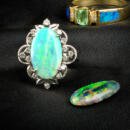
Gem in the Spotlight: Opal
… jewelry. In triplets, that thin piece of opal is sandwiched between a piece of onyx and a clear piece of laboratory grown quartz (the same material that is commonly used for watch crystals). This helps show off the opal’s beauty while …
-
Caring for and Cleaning Your Jewelry
How to Clean Jewelry A diamond’s spectacular beauty is due to its light show. Diamonds make light reflect, show its many colors, and dazzle. To perform its magic the diamond must be clean. Diamonds are … toothpaste or toothpowder will also scratch the metals. This will take away the shine. Ammonia-based cleaners clean diamonds and gold well but they may hurt other gemstones. It is also not a good idea to soak jewelry for very long in ammonia…. Ultrasonic’s can damage other gemstones, know for certain it is safe to use. Ethyl alcohol is good for rinsing diamonds because it evaporates so quickly. Do not use any cleaning solutions that contain oil as they will spot and dull the …
-
Frequently Asked Question about Jewelry
… issued by a Gemological Laboratory describing a Loose Diamond. The laboratory will not issue certificates on Diamonds which are set in a mounting. A Diamond Certificate issues a “grade” indicating the physical properties of the Diamond “at … over a relatively short period of time. Appraisals are most often used for insurance purposes. What’s new with diamonds? Technology is changing the very nature of diamonds. First, new synthetic (man made) diamonds of gem quality are coming …
-
Synthetic Gems: The Whole Story
…gem is called a simulant. So clear glass, rock quartz, GGG, and Moissanite are all diamond simulants. They look like diamonds, but they are not diamonds. These simulants are easy for a well trained and equipped gemologist to detect. But if … positively identified in gem labs with millions of dollars worth of equipment and world class personnel. Synthetic diamonds on the high end and synthetic quartz on the low end are both very difficult to positively identify as synthetic. Both…
-
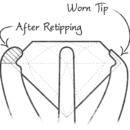
Jewelry Repair FAQ
… just the way it did before a gemstone fell out; who wouldn’t? That’s why we have literally 100s of carats of loose diamonds, sapphires, rubies, opals, pearls, and more in all shapes and sizes to choose from when selecting a replacement stone…the way it used to again. What is retipping, and why do I need it? In a large number of jewelry pieces, the valuable diamonds and gemstones are held in place with prongs. With wear, the tops of these prongs can become worn down. If the prongs…